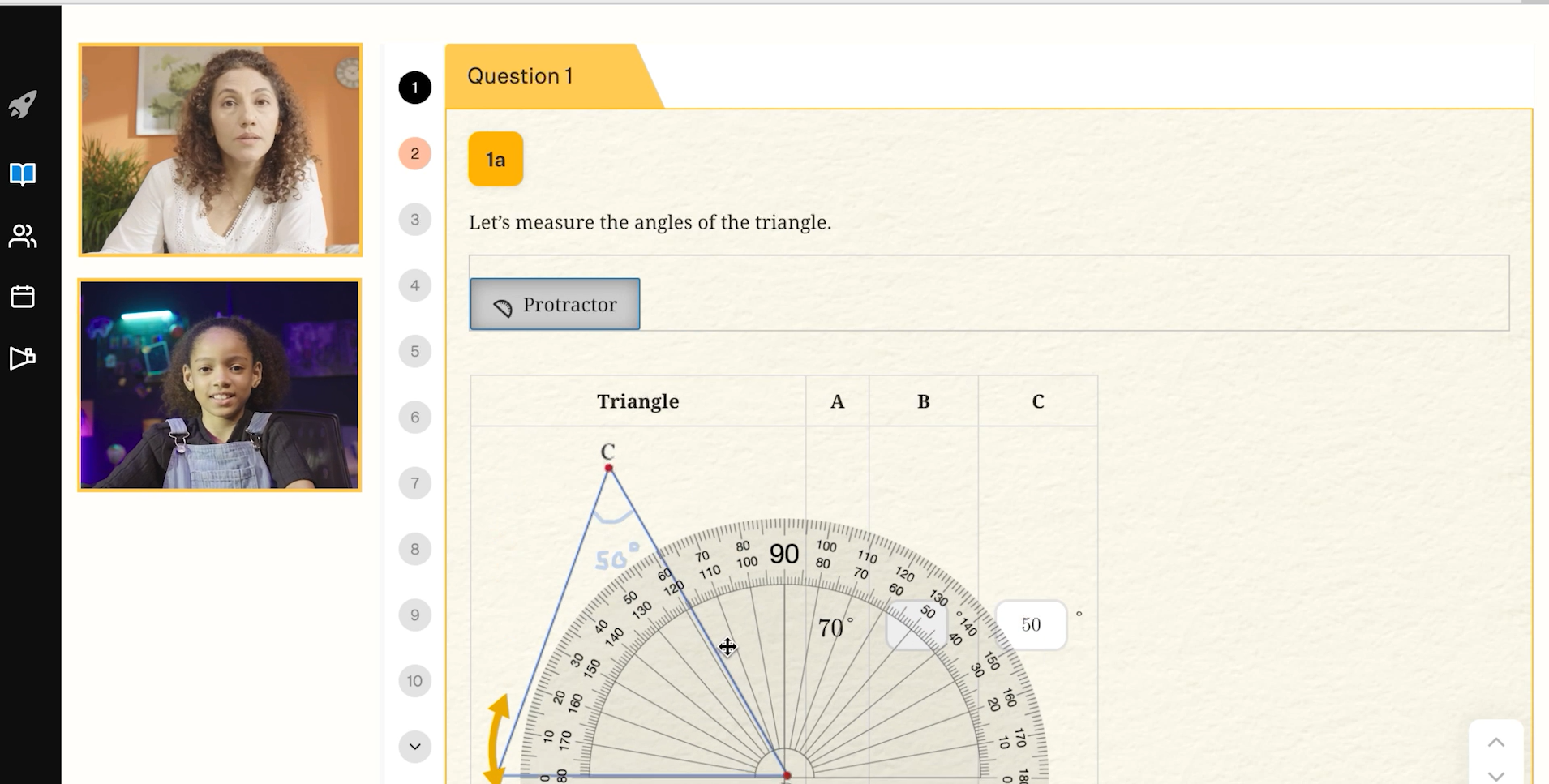Private Tutor vs Learning App vs Group Class | High School Math Guide
Choosing the right math support for your teen can be confusing — private tutors, apps, or group classes all promise results. Not all math support options build true understanding or test readiness. Here’s how to choose what actually helps your teen succeed.

Algebra II, Geometry, Pre-Calculus, Calculus — high school math can feel overwhelming for many teens.
As an educator and a parent, I know the real question isn’t whether your teen needs help — it’s what kind of high school math support will actually work.
From private tutors and online math tutoring apps to group classes, there are plenty of options. Each offers different benefits, but not all help students build deep understanding, problem-solving skills, and confidence — which are essential for high-stakes exams like the SAT, AP Math, ACT, and other college readiness tests.
Here’s how I like to break down the pros and cons of each option, so you can make the best choice for your teen’s learning.
Key Takeaways
Finding the best way to learn high school math can be challenging — each option, from private tutoring to learning apps and group classes, has unique strengths and trade-offs.
- Private tutors give personal attention, but this format depends heavily on individual expertise.
- Learning apps are flexible and visual, but can become too passive.
- Group classes bring structure and routine but lack customization.
- High school students learn best with a balanced approach that combines personalized guidance and self-driven learning.
- Cuemath offers 1:1 live online tutoring with expert teachers, interactive puzzles, and real-world problem-solving, helping teens understand concepts deeply, build confidence, and advance at their own pace.
✅ The best learning happens when guidance, practice, and independence come together — just like Cuemath does.
1. Private Tutor: One-on-One Guidance, But Inconsistent Quality
A private tutor gives focused, individual help. For students struggling to connect classroom theory with practice, this can be invaluable.
But results vary widely — some tutors help students understand concepts, while others focus on quick fixes like completing homework or cramming for exams.
Private tutoring, while highly personalized, can sometimes lead students to rely too heavily on the tutor for explanations and solutions, reducing opportunities for independent problem-solving and self-confidence.
| ✅ Pros | ⚠️ Cons |
|---|---|
| Personalized explanations at your teen’s pace | Depends heavily on tutor quality and consistency |
| Real-time feedback on where they go wrong | May lack a structured curriculum or measurable progress |
| Builds accountability and confidence | Can make students overly dependent |
| Private tutoring can be quite expensive |
2. Learning App: Flexible and Engaging, But Often Passive
Learning apps are popular for their convenience. Visual lessons, gamified quizzes, and instant feedback make them engaging for high schoolers.
However, most apps focus on watching rather than doing. Without guided feedback, students can mistake recognition for understanding — a risky gap in high school math. Additionally, most apps lack progress tracking, making it hard to measure real learning outcomes.
| ✅ Pros | ⚠️ Cons |
|---|---|
| Flexible and available 24/7 | Passive learning without active problem-solving |
| Great for quick review or extra practice | No teacher feedback when students get stuck |
| Encourages independent study habits | Difficult to track real progress |
3. Group Class: Motivation Through Structure, But Limited Individual Focus
Group classes — whether in coaching classes or online — give structure, accountability, and a sense of community. Teenagers often find motivation through peer learning, but less confident students may hesitate to ask questions or participate fully, limiting their understanding.
In Group classes, the pace of the sessions is designed for the majority, not for each learner. That can leave some students behind while others feel under-challenged.
| ✅ Pros | ⚠️ Cons |
|---|---|
| Regular schedule and structured learning | One-Size-Fits-All Approach – pace may not suit every learner |
| Affordable compared to private tutors | Limited Personal Attention in larger groups |
| Peer interaction can help a few students | Peer Pressure and Competition may motivate some, but stress can affect confidence |
| Shy students may hesitate to ask questions | |
| Fixed Scheduling can conflict with school or activities, disrupting your learning continuity |
4. The Blended Model of Cuemath: Personalized Guidance + Active Practice + Progress tracking
The strongest math outcomes come from a balanced approach — one that combines personal guidance, structured learning, and independent practice.
Programs like Cuemath are designed around this balance.
With Cuemath’s interactive online platform, students learn from simulations, puzzles, and real-world problems that promote deep understanding of math concepts—preparing them to excel in tests and exams.

While private tutoring is often expensive, Cuemath addresses this disadvantage by offering personalized tutoring through innovative pricing models and flexible payment options, making it more accessible.

This method doesn’t just prepare students for exams — it helps them develop the logical thinking and problem-solving skills that math (and life) demand.
It’s not about replacing teachers or apps — it’s about integrating both for deeper understanding and lasting confidence.
For more insights on pricing, you can also read the following blog

🧭 Quick Guide: Choosing What’s Right for Your Teen
Here’s a quick guide to help you decide:
| Your Teen’s Need | Best Option | Why |
|---|---|---|
| Needs step-by-step guidance | Private Tutor | Personalized focus |
| Prefers self-paced review | Learning App | Flexibility and variety |
| Enjoys group problem-solving | Group Class | Collaborative learning |
| Wants balanced learning outcomes | Blended Program like Cuemath | Combines structure + personalization + Flexibility |
Conclusion
- High school math support works best when it matches your teen’s learning style, motivation, and goals.
- Private tutors give personalized guidance and real-time feedback, but there is a risk of tutor quality and inconsistency.
- Learning apps are flexible and engaging, but can be too passive and don’t always track real progress.
- Group classes provide structure and peer motivation, yet individual attention may be limited, and pacing may not suit everyone.
- Blended programs like Cuemath combine the strengths of all three — 1:1 live tutoring, interactive puzzles, real-world problems, and adaptive pacing — helping teens build confidence, truly understand concepts, and prepare for high school challenges and beyond. I believe this balanced approach gives students the best chance to succeed in high school math and beyond.
Ready to give your teen the best support in high school math?
📚 Book a Free Cuemath Trial Today and help your teen build confidence, master high school math, and get college-ready!
❓FAQs
1. Which option helps the most with math confidence?
Programs like Cuemath’s 1:1 online math tutoring are highly effective for building math confidence. With interactive visuals, simulations, and personalized guidance, students can learn at their own pace, ask questions freely, and truly understand concepts—helping them feel more confident and capable in math.
2. Are learning apps enough for advanced math topics like Calculus or Trigonometry?
Self-paced learning apps can help with practice, but real-time feedback from a tutor is often essential for mastering complex topics in high school. This can be achieved by personalized math tutoring options like Cuemath.
3. What’s the ideal tutoring frequency for high school students?
Typically, 3 focused sessions a week, with consistent revision work in between.
4. How does Cuemath differ from traditional group classes?
Cuemath offers 1:1 interactive sessions that blend personalized tutor support with flexible online learning. The platform includes games, simulations, and real-world problem-solving activities designed to motivate high schoolers and build college readiness.

About the Author
Neelima Kotamraju
Math & Science Educator| Writer — Cuemath
Turning confusion into curiosity, and curiosity into confident learning.
View My LinkedIn

